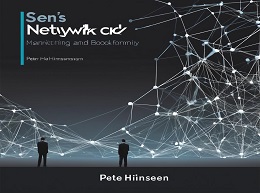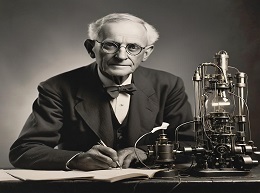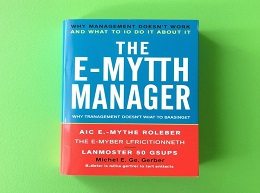The Network Always Wins: How to Influence Customers, Stay Relevant, and Transform Your Organization

Navigating the Networked Economy
In "The Network Always Wins: How to Influence Customers, Stay Relevant, and Transform Your Organization to Move Faster than the Market," Peter Hinssen offers a comprehensive guide to thriving in the digital age. As businesses face rapid technological advancements and shifting consumer behaviors, Hinssen's book provides essential strategies for maintaining relevance and competitive edge. This review delves into the key concepts and practical insights presented in the book, illustrating their application with real-world examples.
The Shift from Hierarchies to Networks
Hinssen begins by explaining the fundamental shift from traditional hierarchical organizations to networked structures. In the past, businesses operated like well-oiled machines with clear chains of command. Today, the most successful organizations resemble living organisms, characterized by dynamic, interconnected networks that adapt swiftly to changes.
Example: Netflix's Agile Approach
Netflix serves as a prime example of a networked organization. Originally a DVD rental service, Netflix transformed into a streaming giant by embracing a flexible, customer-centric approach. By continuously analyzing user data and preferences, Netflix rapidly adapts its content offerings, ensuring it remains relevant and competitive in the ever-evolving entertainment industry.
Engaging with Customers in Real Time
Hinssen emphasizes the importance of engaging with customers in real time. In the networked economy, customers expect immediate responses and personalized experiences. Businesses that leverage digital tools to interact with customers and gather feedback can build stronger, more loyal relationships.
Example: Zappos' Exceptional Customer Service
Zappos, the online shoe retailer, exemplifies customer-centricity. Known for its exceptional customer service, Zappos empowers its employees to go above and beyond in meeting customer needs. This commitment to real-time engagement has earned Zappos a loyal customer base and a reputation for excellence.
Embracing Continuous Innovation
To stay relevant, businesses must embrace continuous innovation. Hinssen argues that innovation should be an ongoing process, embedded in the organization's culture. Companies that encourage experimentation and learning from failures are better positioned to adapt to market changes.
Example: Google's 20% Time Policy
Google's "20% time" policy, which allows employees to spend 20% of their work time on projects outside their regular responsibilities, has fostered a culture of innovation. This policy has led to the development of groundbreaking products like Gmail and Google Maps, keeping Google at the forefront of the tech industry.
Fostering a Networked Mindset
Hinssen highlights the need for organizations to foster a networked mindset among their employees. This involves breaking down silos, encouraging collaboration, and empowering individuals at all levels to contribute ideas and solutions.
Example: Spotify's Squad Model
Spotify's "squad model" illustrates a successful implementation of a networked mindset. Teams, or "squads," operate like mini-startups within the company, with autonomy to innovate and make decisions. This approach has enabled Spotify to stay agile and responsive to market demands, driving its success in the competitive music streaming industry.
Adopting Cutting-Edge Technologies
In "The Network Always Wins," Hinssen emphasizes the role of technology in enhancing organizational speed and agility. Businesses that adopt cutting-edge technologies can streamline operations, improve decision-making, and deliver superior customer experiences.
Example: Amazon's Use of AI and Automation
Amazon's extensive use of artificial intelligence (AI) and automation has revolutionized its operations. From AI-driven product recommendations to automated warehouses, Amazon continuously leverages technology to enhance efficiency and customer satisfaction, maintaining its leadership position in the e-commerce sector.
Preparing for Disruption
Hinssen advises organizations to prepare for disruption by building resilience and adaptability. This involves anticipating potential threats, developing contingency plans, and fostering a culture of continuous learning and improvement.
Example: Airbnb's Response to COVID-19
Airbnb's response to the COVID-19 pandemic showcases resilience and adaptability. Faced with a significant drop in bookings, Airbnb quickly pivoted its business model to focus on long-term stays and virtual experiences. This swift adaptation enabled Airbnb to navigate the crisis and emerge stronger.
Embracing Digital Transformation
Hinssen provides practical strategies for embracing digital transformation, such as investing in digital tools, enhancing data analytics capabilities, and fostering a culture of innovation. Organizations that effectively implement these strategies can achieve greater speed, agility, and customer satisfaction.
Domino's Digital Overhaul
Domino's Pizza's digital transformation is a testament to the power of embracing digital tools. By investing in a robust online ordering system and innovative marketing campaigns, Domino's significantly improved its customer experience and operational efficiency, leading to a remarkable turnaround in its business performance.
Embracing the Networked Future
"The Network Always Wins" offers valuable insights and actionable strategies for businesses navigating the complexities of the digital age. By understanding the shift from hierarchies to networks, engaging with customers in real time, embracing continuous innovation, and leveraging technology, organizations can stay relevant and competitive in fast-paced markets. Hinssen's book serves as a practical guide for leaders seeking to transform their organizations and thrive in the networked economy.
Applying the Lessons
Readers are encouraged to apply the lessons from "The Network Always Wins" to their own organizations. Whether it's fostering a networked mindset, investing in digital tools, or building resilience, these strategies can drive meaningful change and sustainable growth.
Continuous Learning and Adaptation
As the business landscape continues to evolve, continuous learning and adaptation remain critical. By staying informed about emerging trends and technologies, and by remaining open to new ideas and approaches, organizations can navigate the networked future with confidence and success.













